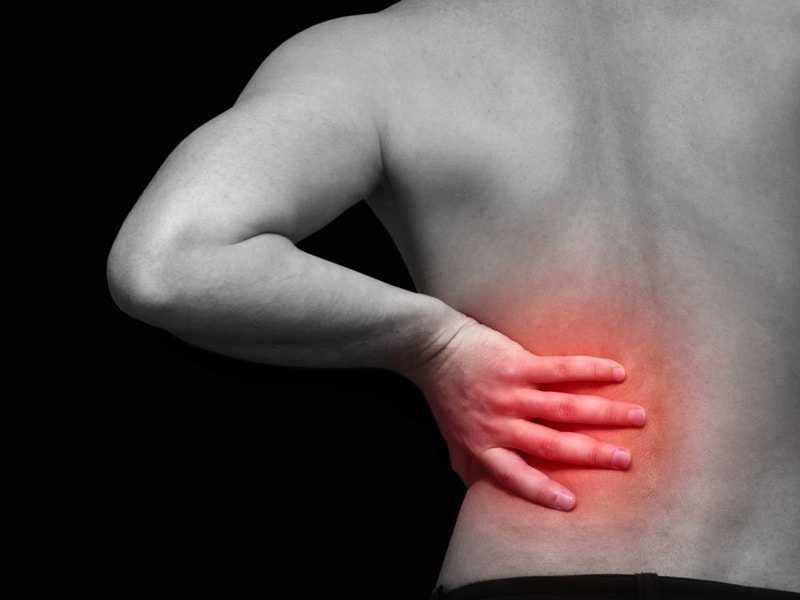Myalgia, or muscle pain, is a symptom of many diseases and disorders. The most common causes are the overuse or over-stretching of a muscle or group of muscles. Myalgia without a traumatic history is often due to viral infections. Longer-term myalgias may be indicative of a metabolic myopathy, some nutritional deficiencies or chronic fatigue syndrome.
What is Myalgia?
Myalgia is commonly known as muscle pain or muscle ache. It is an extremely common condition that almost all people get to experience. Myalgia is not a disease or a disorder but rather a symptom signifying an existing underlying condition. The pain in the muscle can range from mild to excruciating and can linger for a few days or even longer. It can affect almost any part of the body including the neck, hands, legs and the back.
Myalgia Types
Almost every part of the body composed of muscle that the pain can occur in any part. Myalgia composed of several types which define the part of the body that is being affected and the number of muscles that are involved in the process of pain including the cause of pain.
Epidemic myalgia
This is the type of myalgia that is also known as Bornholm disease. It is muscle pain caused by a viral infection and affects the upper abdomen and the lower chest. The pain is characterized as spasmodic and develops suddenly. The pain is also worsening with every movement and deep breathing causing shortness of breath to the affected individual.
Fibromyalgia
It is defined as myalgia that is widespread that usually involves the joints, muscles and the ligaments. The pain can be perceived on both sides of the body and is described as the dull and constant ache. This form of myalgia is often aggravated by pressure applied to the affected site while this form is commonly associated with insomnia, osteoarthritis, lupus, irritable bowel movements and headaches.
Trapezius myalgia
Trapezius myalgia is myalgia that involves the muscle of the neck and is triggered by a problem with the trapezius muscle. The pain is described as long-lasting and is particularly reactive to stressful situations and repetitive work tasks. This form of myalgia is more common in women who are working for longer hours in front of the computer.
Polymyalgia rheumatica
Polymyalgia rheumatica is a type of myalgia that involves several muscles. It is an anti-inflammatory disorder that usually affects older people and rarely occurs in an individual below the age of 50 years. The pain is often associated with stiffness and inflammation and occurs in the muscle of the neck, shoulders, upper arms, hips, and the buttocks.

Myalgia Symptoms
Myalgia has numerous symptoms while the manifestation of symptoms also depends on the area that is being affected.
- Pain that is often severe is the most prominent among the symptoms of myalgia. The onset is usually sudden and lingers for a few days to several weeks depending on the intensity and the cause of the pain. The pain is also associated with stiffness and spasm.
- An acute case of myalgia can severely incapacitate an affected individual.
- The chronic case of myalgia is marked with pain and stiffness after periods of inactivity and pain usually eases after reasonable exercise.
- Myalgia affecting the cervical manifests with a heaviness of the head accompanied with an occipital headache.
- Cervical myalgia can also manifest with impairment of vision and problems with swallowing and numbness of the face may also be experienced.
- Difficulty in breathing in and breathing out may also be experienced with chest involvement in myalgia.
- Irregular heartbeat is also experienced when myalgia involves the heart and is also potential for cardiac arrest.
- Tenderness of the affected area may also be observed.
Other signs and symptoms of myalgia may include the following:
Myalgia Symptoms
Myalgia has numerous symptoms while the manifestation of symptoms also depends on the area that is being affected.
- Nausea and vomiting
- Onset of fever
- Anxiety and depression
- Stiffness
- Vertigo
- Numbness and tingling sensation in the arms or other parts of the body.

Myalgia Causes
The most common cause of myalgia is tension or stress that results from an injury or excessive use of the affected muscle. Myalgia that developed from this cause is usually localized and can involve single or multiple muscles. Physical damage to muscle due to compulsive exercises can also cause myalgia. Severe or strenuous pulling activity of the ligaments can also result in pain in the muscles.
Myalgia can also develop as a consequence of some diseases and disorders which may be in existence in the individual suffering from myalgia. Such diseases and disorders that can cause myalgia to include the following:
Chronic fatigue syndrome
Chronic fatigue syndrome is a disorder marked by extreme fatigue and includes muscle pain as one of the 8 official symptoms of the disorder.
Chronic exertional compartment syndrome
- Chronic exertional compartment syndrome is a syndrome that causes nerve and muscle pain induced by an exertion of exercise.
Eosinophilia-myalgia syndrome
- Eosinophilia-myalgia syndrome is a rare inflammatory and autoimmune disease that causes pain and inflammation of the skin, nerves, lungs, heart, blood vessels and muscles.
Myalgia Treatment
The aim of treatment of myalgia is through alleviation of pain to provide relief and comfort to the patient. The treatment is also dependent on the underlying condition that triggers the onset of myalgia. It is, therefore, necessary to initially identify the cause of myalgia prior to administration of treatment.
Myalgia can be alleviated with natural treatments and can be treated at home.
- Enough rest is necessary to help reduce the inflammation that is causing the muscle pain.
- The warm or cold application can reduce the inflammation and relax the muscle thus alleviate the muscle pain.
- Gentle massage can relax the muscle and reduce the pain and it can also help in reducing the muscle inflammation.
- Over-the-counter pain relievers such as ibuprofen.



